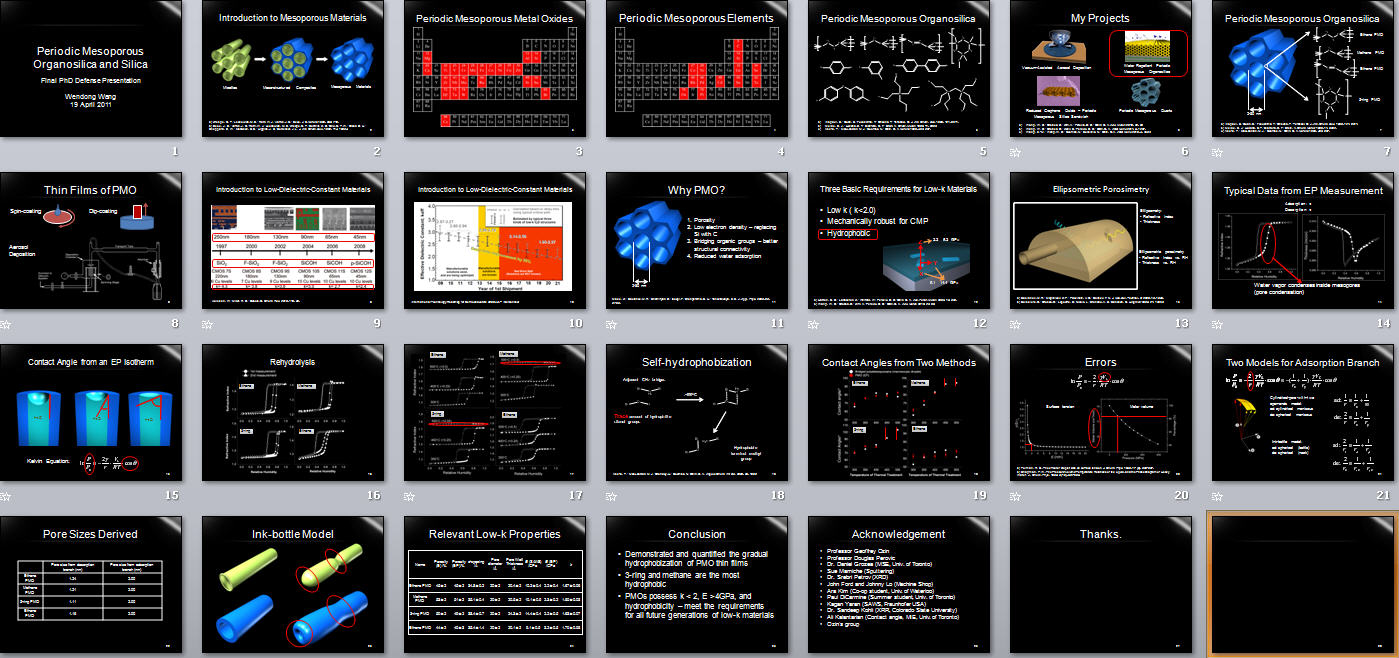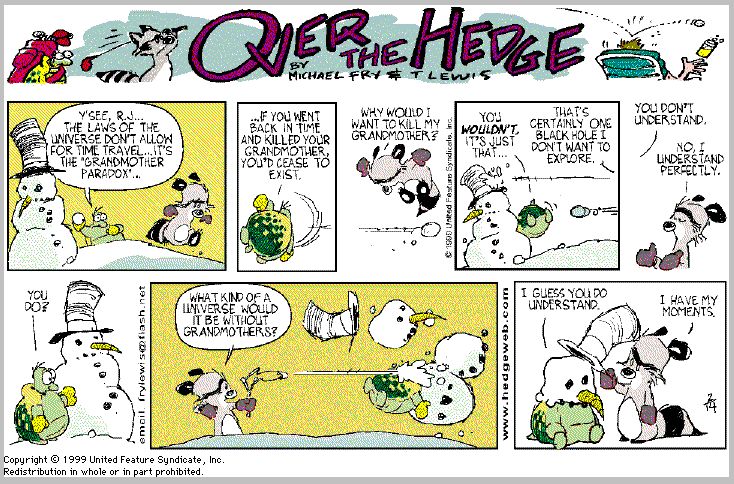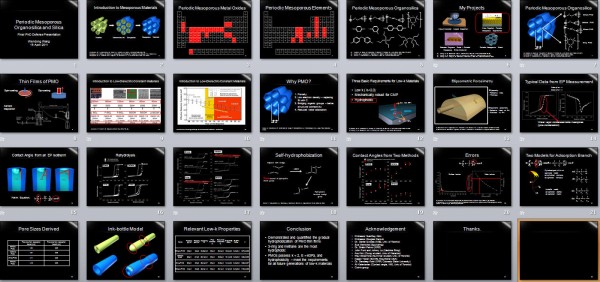
27 slides, including the title and the acknowledgement slides, 2o minutes of presentation, one hour and half of Q&A, and then done. On 19 April 2011, 1 pm, I finished my defense. Although I knew it was just a formality, I still felt awesome when being called “Dr. Wang”. In the rest of the week, I have more or less kept my routines, basically TKD and lab , as I keep telling myself not to be too sentimental about it. As the long weekend started, I found myself in need of a break, a change of routine, and gave myself some time for self-reflection. Getting a PhD marks the end of the beginning of my career in science. But not just that. It is also the end of my student life. Things that have been put off in excuse of being a student can no longer be put off. Moments of choices will soon come; obligations will follow. Which reminds me of what Jose Mourinho the coach of Real Madrid said after winning Copa del Ray final against Barcelona: today we celebrate; tomorrow is another day.
Tag: chemistry
My thesis preamble
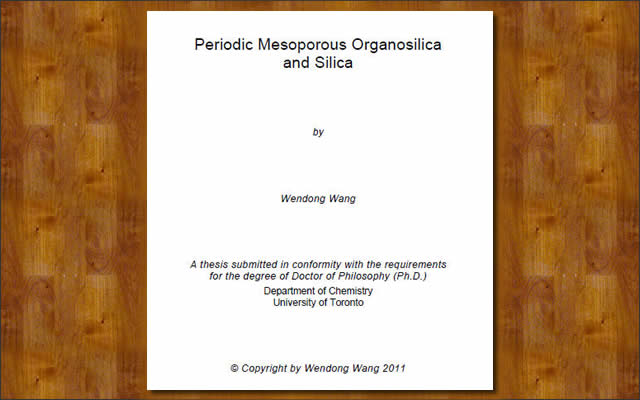
Seven days before flying to Toronto for graduate studies, I attended Asian Technology Initiative Entrepreneurial Conference 2006 in Shanghai. One theme of the conference was Web 2.0, the key feature of which was user-generated content. Wikipedia, Facebook, blogging websites, YouTube, and Twitter all fell into this category. Although those social media websites were just fledging at that time, time has proved that they have not only survived but are thriving. In the meantime, I have turned from a skeptic to an active user of most of these sites. They have provided me with a means to stay connected with distant friends and family members, a platform to share thoughts and memories, and most importantly a way to express my individual identity. My experience mirrors a large portion of the society: at the most basic level, Web 2.0 gives a voice to everyone. Since everyone has a voice, the web becomes increasingly democratic and messy.
Science publishers have adopted Web 2.0 early. Not only have they digitized their journals and made them available online, they have also designed their websites as the central platforms to communicate with authors and readers. Nature publishing group, ACS, and Wiley all publish RSS feeds (developed initially for blogs) of their papers; and Nature now even allows every reader to comment on all published articles online. This immediate integration of science publishing with Web 2.0 reflects the key similarities of the two: both are democratic because every researcher publishes, and once a paper is published, everyone can comment on it; both are messy because given the large volume of data published, finding what one wants can be daunting.
My experience with social media websites and with science publishing leads me to the question—why thesis? Scientific journals are like traditional media such as New York Times and BBC; a thesis is like an individual’s blog. In much the same way that most people read news from traditional media outlets but not from an individual’s blog, most people will know about my work through my papers instead of my thesis. Since my work has been communicated to the scientific community through papers, why am I writing a big thick book that only a handful of people in the world will actually (have to) read? Or from the perspective of my thesis committee, why reading a lengthy thesis instead of more compact papers when I (committee members) am already overloaded with information? Without adding much new to what is already known, my thesis will probably contribute to the messiness of information, in much the same way individuals’ blogs do these days.
I want to try something different.
At the University of Toronto, I have attended courses, workshops, and seminars on academic writings, but I have not found any official training on scientific illustration. Given the importance and increasing use of graphics to present ideas and data in scientific publishing—almost all journals require a table-of-content image accompanying a paper and every journal encourages authors to submit images to be considered for front covers—it will be beneficial for a graduate student to have some formal training on scientific illustration. Since none exists, I take every opportunity to train and practice myself, including this thesis. I shall therefore present key ideas in graphic form and keep words to a minimum level. And in doing so, I hope to make it compact and reader-friendly.
P.S. I just sent the thesis (144 pages in total) to the graduate counselor of the chemistry department last Friday. She is going to forward the thesis to an external examiner in IBM. Although it took only about one month for me to write it (or more precisely, compile it from published papers), it is still a relief to have it out.
An article every chemist should read — to stay relevant by meeting global challenges
As I am in the process of looking for a postdoc and thinking about my own research topic in the not-so-distant future, I seek guiding lights. I look to those who offer a bird’s-eye view and who can see the future through the lens of the past and the present. And I think I finally find it: Let’s get practical.
It went from the origin of chemistry, through the status quo, to where chemistry should be, with a resounding note on applying chemistry in resolving global challenges. It is a compelling argument. To quote a few that really makes me thinking what I am about to do.
“But if chemistry as a discipline is poorly equipped for today’s problems, it will wither before the challenges of the future. Reinvention is essential for the continuing relevance and survival of the discipline.”
“…academic chemistry is overpopulated. The proliferation of PhD programmes resulted in a demand for research funds that exceeded the (much-expanded) supply, and the imbalance of supply and demand contributed to a peer-review system that protects established fields at the expense of new ideas. These PhD programmes produced too few new ideas and too many average scientists, and neither provided novel solutions to problems (or jobs), nor caught the attention of the public.”
“Society does not care if a molecule has a particular structure; it cares if a pill lowers blood pressure, or a panel generates electricity when exposed to sunlight.”
“To make fundamental discoveries, an approach that starts with practical problems, and uses them to reveal unsolved fundamental problems, will work at least as well as (and arguably better than) one that starts with the familiar questions of familiar disciplines.”
“A focus on these intellectual strengths avoids being second-best in someone else’s game.“
MRS Spring Meeting
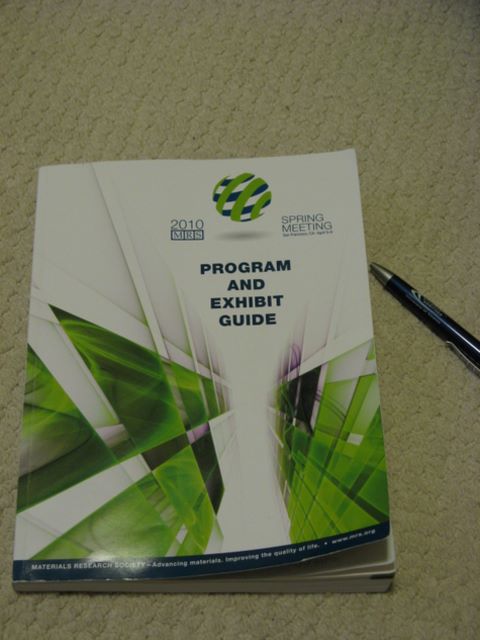
Last week, I blogged for MRS spring meeting. This is the first paid job I had outside research and TA. It was absolutely fun. During the meeting, I often got back in my room at around 9-10pm, and slept for 4 hours, woke up, wrote a post or two, and then slept again for 4 hours, and woke up, and went to presentations. It was exhausting but enjoyable. I guess it is so enjoyable because I am quite certain that there were people reading what I wrote, although there were still very few comments. It reminds me of a scene in Julie and Julia where Julie the author were excited that she got so many comments on her posts.
Another reason why I found it so enjoyable is that I got to utter some opinions of my own. Journalism is never about facts only, once I wrote it, I know that whatever I report would have my opinions in it. I felt extremely good that my prediction on the first prize winner of the Science as Arts competition is correct. And also, I were able to write something that really excites me, such as graphene and metamaterials. They are hot topics right now: one could be the next generation electronic materials; the other could make invisibility cloak possible. It sounds like a fashion in science, but there are more substance to them than those stylistic trends trend in show businesses.
Richard Feynman: Physics is fun to imagine | Video on TED.com
Richard Feynman: Physics is fun to imagine
via Richard Feynman: Physics is fun to imagine | Video on TED.com.
Some thoughts:
1) Feynman once said if our civilization ever pass one piece of knowledge onto the next civilization, whatever form of life that civilization is, it is the structure of an atom.
2) The video on different ways of thoughts explains a great deal why when you explain some very basic concepts to first-year students, they look at you as if you are from another planet. It’s just that brains work differently. If you happen to have attended the personality and your career choice workshop in career center, or you happen to have read about MBTI instrument, you will find his nerdy observation is exactly what those theory try to address.
New Year Greeting Letter – nerd version
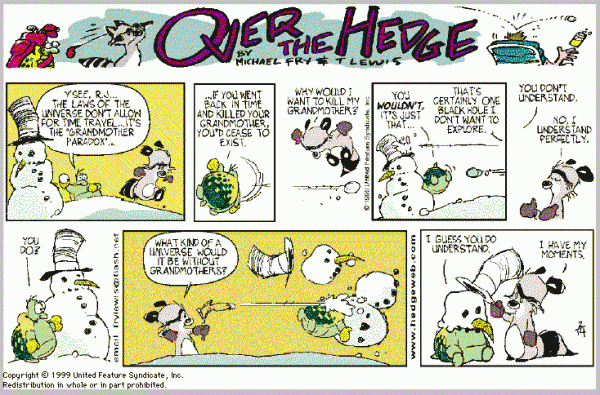
It occurs to me today that if time travel is possible, not only will the chain of causes and effects be disrupted, but also the law of mass conservation will be broken. Science fictions seem to like exploring the consequences of the former, a few of which I happened to watch this week, such as Back to the Future and Star Trek. In those movies, things called parallel universes or alternative realities come to rescue the logical sequence of causes and effects. But I haven’t seen anyone trying to explain what happens to the broken law of mass conservation. Einstein might have a solution: instead of the conservation of mass, it is the conservation of energy. But energy is a slippery concept that anything can turn into a form of it or transform from one form into another .
Now jump to a totally unrelated perspective. During a dialogue between Buddhist monks and theoretical physicists, the monks likened the meditation in Buddhism with maths in physics. Maths in physics is a tool to guide the logic reasoning; and through years of experience, users of these maths tools can see through the symbols and equations and get direct intuitions of the actual physical images and relationships they represent. For example, Jonh Pendry, the theoretician who proposed the construction of negative-refractive-index meta-materials, said the idea of split-ring resonators came to him on a raining afternoon when he was playing around with Maxwell equations. Similar things happen in meditation, the monks said: only through years of practicing meditation, they start to see things normal people don’t see (figuratively, and maybe literally as well).
This argument strikes me particularly strong because science thrives due to human intuition, and if there is another completely different source of intuition that hasn’t been explored, it means that we have left many things out of our considerations, and hence whatever we come up with in science to explain the world is incomplete.
When teaching young Luke Skywalker the art of Jedi, Yoda famously said “You need to unlearn what you have learned” in order to learn how to use force, for example to levitate a spacecraft. So it seems that to leave a slight doubt on everything, including what we believe and what we hold as absolute truth, is necessary for a healthy science.
But it’s not just about science. Humans are known for mistaking beliefs with facts, and convictions with truth. To acknowledge the one is fallible and to accept that fact is essential in any relationship not only between us and the physical world, but also among ourselves, humans. And as colleagues, we have ups-and-downs in our relationships in the past year, and will definitely have more ups-and-downs in the coming year. I treasure all those experiences, and am thankful for everything we have shared in the past year, and look forward to the exciting things coming in the new year.
Now what do all these have anything to do with holidays? Wait.
So if the law of energy conservation doesn’t hold, what disrupt it? It is the FORCE! (Recall the derivatives of energy with respect to distance is force!)
On the occasion of a new decade, I wish all of you “MAY THE FORCE BE WITH YOU! “.
Warm regards,
Wendong
PS. This is my new year’s greeting letter to my group. Weird chain of thoughts.
Cartoon Source: http://athene.as.arizona.edu/~lclose/teaching/nats102/time_travel_cartoon_2.gif
Science Pitch Talk in CHM 139, 2009F
Last Tuesday, it was the 150th anniversary of the publication of On the Origin of Species, and this year is also the 200th anniversary of the birth of Charles Darwin. This event has inspired many discussions in the scientific community about Darwin and the theory of evolution. I intend to give you one of the views held by Darwin himself.
Drawing: It takes 8 minutes 19 seconds for the light to reach from the Sun to the earth, and it takes 12.8 seconds for reflected light to reach from the moon to the earth. On the earth, billions of years ago, one cell or a small organism started the circle of life, and have formed millions of branches. And one branch, miraculously, leads to human.
Most of the materials you learn in this class and in other science classes, you will forget in one or two years after your graduation. And it is normal: Two important parameter of our brains, comprehension and retention; even if you perfectly understand everything now, you will forget most of them because human brains only have a limited retention time. If you do not revisit it from time to time, the brain will free those space for new information. That’s completely normal and human. Now, the question is, since you will forget the materials, why bother learning them?
The fact that the earth orbits the Sun, and the moon orbits the earth, and the fact that matters are composed of atoms and molecules, and the fact that almost all of the mass of an atom concentrates in its core, are not known to the mankind just a few hundred years ago. It is a privilege to know more about how the world of Nature operates more than the most intelligent person living just a few centuries ago. We enjoy this privilege because science accumulates. Those facts have become the common knowledge in the modern times, and it is a literacy requirement for any person of the modern days. That’s the first reason why you should learn them, even though you will forget all the details, you will at least be aware of those basic facts.
The second reason is more profound. To our civilization as a whole, they have deeply shaped the way we humans think about the world and about ourselves inside this world, and help us realize really how little we are in this Universe. To you and me, to each individual, they also offer a view of life. In the concluding paragraph of On the Origin of Species, Darwin wrote:
There is grandeur in this view of life, with its several powers, having been originally breathed into a few forms or into one; and that, whilst this planet has gone cycling on according to the fixed law of gravity, from so simple a beginning endless forms most beautiful and most wonderful have been, and are being, evolved.
Take it slow, make it happen.
I always wanted to create a website of some sort. I started my first trail in 2005 for When Pigs Fly, and it was a disaster. At that time, I was overconfident about my ability, overestimated my free time, and had very little idea of how complicated it is to build a website completely from scratch. The result is a complete failure. After that, I decided to learn it as a hobby. It takes some time to get to know all the component technology, and realize one man cannot do it all. Acknowledging the limit of myself and the attitude of willingly accepting help from other programmers, i.e. using platform software, help me finally realize this dream.
